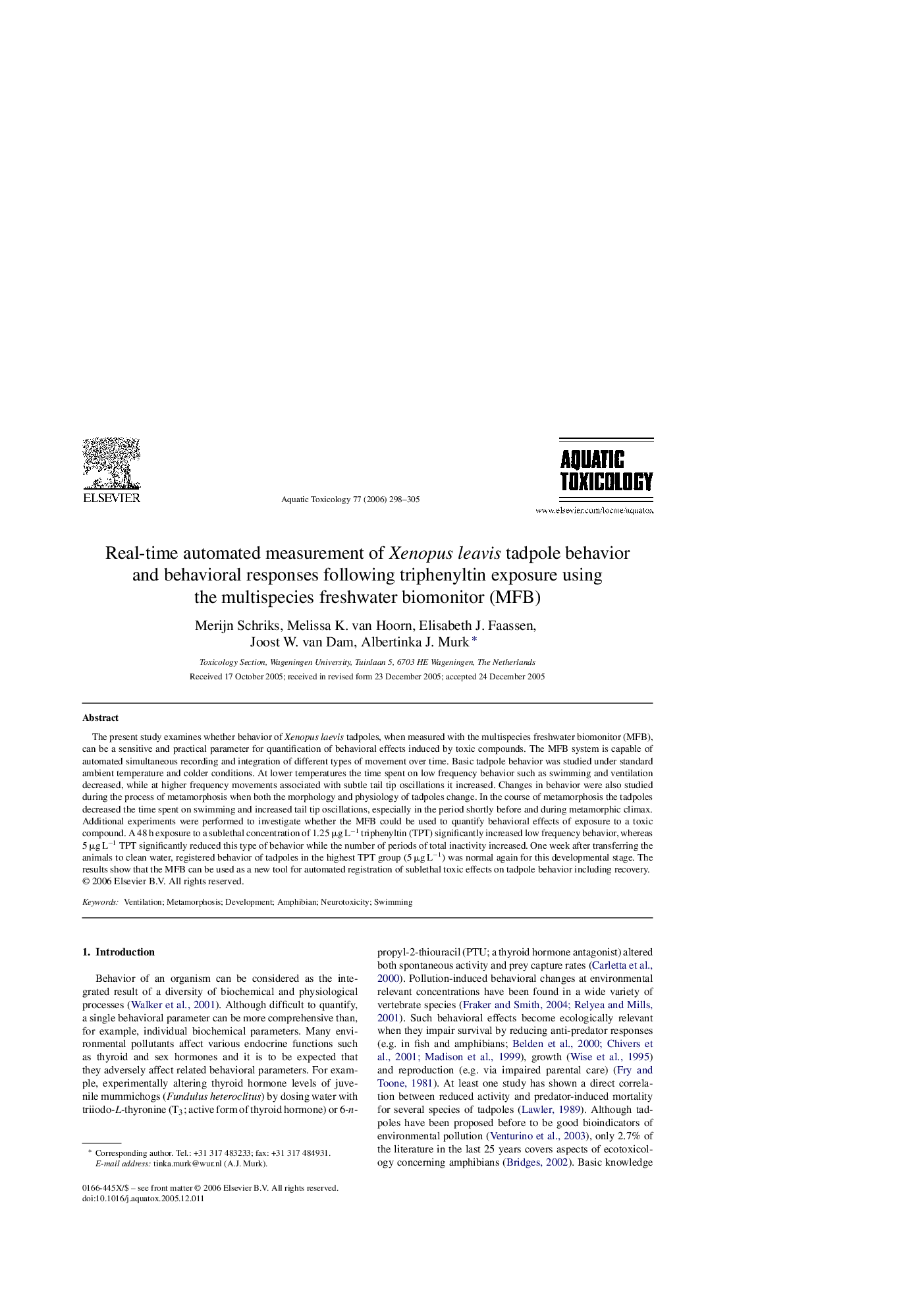| Article ID | Journal | Published Year | Pages | File Type |
|---|---|---|---|---|
| 4531396 | Aquatic Toxicology | 2006 | 8 Pages |
The present study examines whether behavior of Xenopus laevis tadpoles, when measured with the multispecies freshwater biomonitor (MFB), can be a sensitive and practical parameter for quantification of behavioral effects induced by toxic compounds. The MFB system is capable of automated simultaneous recording and integration of different types of movement over time. Basic tadpole behavior was studied under standard ambient temperature and colder conditions. At lower temperatures the time spent on low frequency behavior such as swimming and ventilation decreased, while at higher frequency movements associated with subtle tail tip oscillations it increased. Changes in behavior were also studied during the process of metamorphosis when both the morphology and physiology of tadpoles change. In the course of metamorphosis the tadpoles decreased the time spent on swimming and increased tail tip oscillations, especially in the period shortly before and during metamorphic climax. Additional experiments were performed to investigate whether the MFB could be used to quantify behavioral effects of exposure to a toxic compound. A 48 h exposure to a sublethal concentration of 1.25 μg L−1 triphenyltin (TPT) significantly increased low frequency behavior, whereas 5 μg L−1 TPT significantly reduced this type of behavior while the number of periods of total inactivity increased. One week after transferring the animals to clean water, registered behavior of tadpoles in the highest TPT group (5 μg L−1) was normal again for this developmental stage. The results show that the MFB can be used as a new tool for automated registration of sublethal toxic effects on tadpole behavior including recovery.
